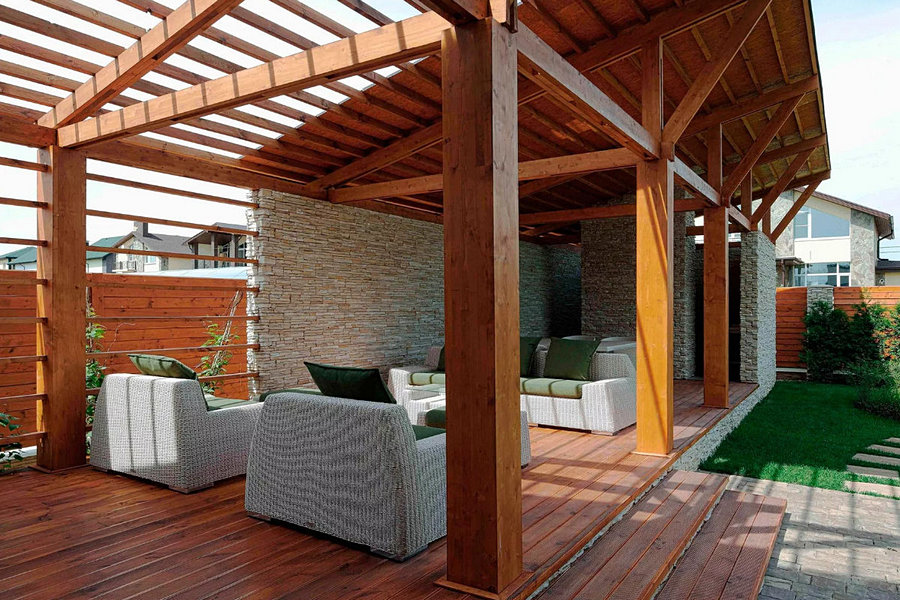Pergolas can add a functional and decorative element to your garden. These structures can be used for many different purposes, from creating different themes to adding safety around a swimming pool. Pergolas are also great for dividing a large garden into smaller, more manageable areas. Read on to learn more about what types of pergolas are available and how to customize them for your needs. In fact, a pergola construction company can help you with it.
Design Options
If you’re interested in building a pergola, you’ll want to consider the many design options available. Choosing the right type of materials is important for the overall look of the structure, but you can also customize the look by selecting a variety of decorative features and finishes. Wood pergolas are a great option for those who want privacy screening and a naturalistic look. Wood pergolas are also easy to customize, and their ends can be carved into intricate shapes for an even more unique design.
A pergola can be stand-alone or attached to a building. Stand-alone pergolas require at least four pillars, while attached pergolas are supported by beams or struts fixed to the ground. Both types provide protection from rain and sun.
Cost
The cost of a pergola largely depends on the type of material it’s made of. Most pergolas are made of wood or aluminum, but some homeowners choose to use more exotic materials. Fiberglass, for example, is an excellent choice for contemporary pergolas. Before you make a decision on the type of pergola to install, be sure to get several quotes. Ideally, you should get at least three estimates from different companies. When you get quotes from these companies, ask them about the material you plan on using and any safety issues.
Upkeep
If you want to extend the life of your pergola, you’ll need to regularly clean it. Fortunately, cleaning a pergola is a simple task. You can use a mild cleaning agent or a bristle brush and water to remove dirt and grime. However, it’s important not to scrub too hard as this can damage the wood. One of the first steps to keep a pergola in good shape is to inspect for cracks. A crack or other damage can lead to rotting wood. It may also be due to a tree limb falling on it or high winds. Damaged pergola sections will begin to weaken the entire structure. This is because the affected section will have to support the weight of the surrounding sections. This additional stress will speed up the deterioration process.
Plants To Add To a Pergola
There are many different types of plants that can be used to grow on a pergola. Some are more suitable for the pergola’s shade, while others thrive in full sun. If you’re looking for a perennial choice, consider using ivy. It is a hardy vine that can grow in most regions. Depending on the variety, it will reach its peak height in 10 to 15 years. You can also try bower vine, which rambles up to 25 feet and produces clusters of fragrant flowers. It will grow well even in a hot climate and attract wildlife to your garden.
If you’re using a container to grow your plants, be sure to water them regularly. They’ll need more care than ground-grown plants. You might also need to repot plants that have thick or woody stems.
Origins
The word pergola derives from Latin and means “projection of the eave.” This structure is typically an arbor, trellis, or extended roof. Pergolas first appeared in written literature in the early 17th century when John Evelyn used the term in reference to a cloister in the Italian city of Trinita dei Monti. Pergolas were also popular in Eastern Asia, where residents of pagodas used them to shelter the interior of their buildings.
A professional hard landscaping company can help you design one.

Football fan, traveler, record lover, Vignelli fan and AIGA member. Doing at the junction of beauty and elegance to save the world from bad design. I work with Fortune 500 companies and startups.
